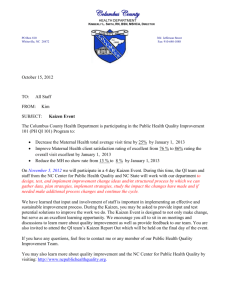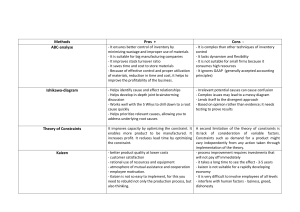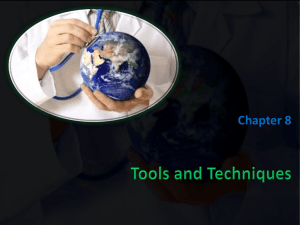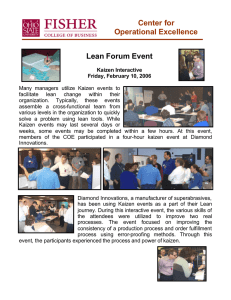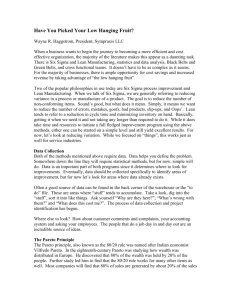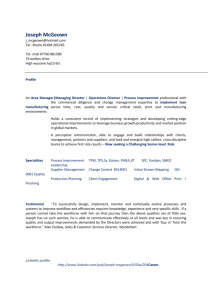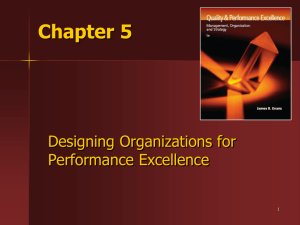Summary - Chapter 8
advertisement
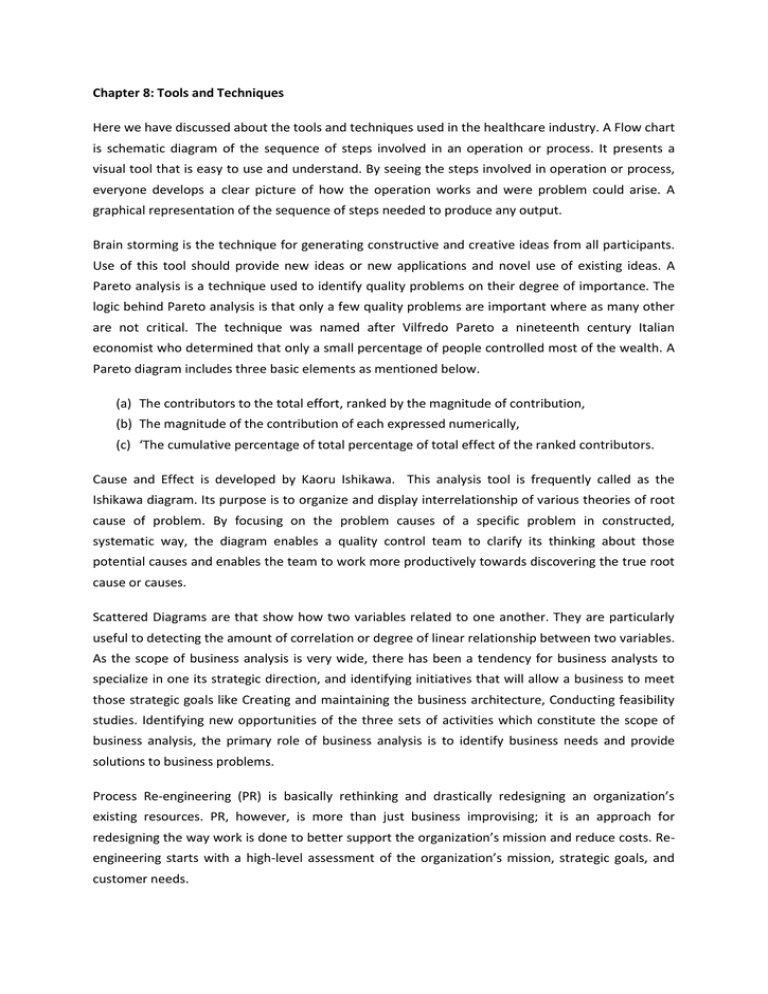
Chapter 8: Tools and Techniques Here we have discussed about the tools and techniques used in the healthcare industry. A Flow chart is schematic diagram of the sequence of steps involved in an operation or process. It presents a visual tool that is easy to use and understand. By seeing the steps involved in operation or process, everyone develops a clear picture of how the operation works and were problem could arise. A graphical representation of the sequence of steps needed to produce any output. Brain storming is the technique for generating constructive and creative ideas from all participants. Use of this tool should provide new ideas or new applications and novel use of existing ideas. A Pareto analysis is a technique used to identify quality problems on their degree of importance. The logic behind Pareto analysis is that only a few quality problems are important where as many other are not critical. The technique was named after Vilfredo Pareto a nineteenth century Italian economist who determined that only a small percentage of people controlled most of the wealth. A Pareto diagram includes three basic elements as mentioned below. (a) The contributors to the total effort, ranked by the magnitude of contribution, (b) The magnitude of the contribution of each expressed numerically, (c) ‘The cumulative percentage of total percentage of total effect of the ranked contributors. Cause and Effect is developed by Kaoru Ishikawa. This analysis tool is frequently called as the Ishikawa diagram. Its purpose is to organize and display interrelationship of various theories of root cause of problem. By focusing on the problem causes of a specific problem in constructed, systematic way, the diagram enables a quality control team to clarify its thinking about those potential causes and enables the team to work more productively towards discovering the true root cause or causes. Scattered Diagrams are that show how two variables related to one another. They are particularly useful to detecting the amount of correlation or degree of linear relationship between two variables. As the scope of business analysis is very wide, there has been a tendency for business analysts to specialize in one its strategic direction, and identifying initiatives that will allow a business to meet those strategic goals like Creating and maintaining the business architecture, Conducting feasibility studies. Identifying new opportunities of the three sets of activities which constitute the scope of business analysis, the primary role of business analysis is to identify business needs and provide solutions to business problems. Process Re-engineering (PR) is basically rethinking and drastically redesigning an organization’s existing resources. PR, however, is more than just business improvising; it is an approach for redesigning the way work is done to better support the organization’s mission and reduce costs. Reengineering starts with a high-level assessment of the organization’s mission, strategic goals, and customer needs. Companies implement Continuous improvements by studying business practices of companies considered best in class. This is called Bench Marking things is an important part of continuous improvement. The ability to learn and study how other do things is an important part of Continuous improvement. The Bench Marked Company does not need to be in the same business, as long as it excels at something that the company doing the study wishes to emulate. The kaizen refers to any improvement, one-time or continuous, large or small, in the same sense as the English word “improvement”. However, given the common practice in Japan of labeling industrial or business improvement techniques with the word “kaizen”. The format for kaizen can be individual, suggestion system, small group, or large group. Kaizen on a broad, cross-departmental scale in companies, generates TQ, and frees human efforts through improving productivity using machines and computing power. While kaizen usually delivers small improvements, the culture of continual associated small improvements and standardization yields large results in terms of overall improvement in productivity. Plan — Do — Check — Act (Pl)CA) cycle describes the activities a organization need to perform in to incorporate continuous improvement in its operation. Six- Sigma is a group of techniques and tools for process improvement. Six-Sigma seeks to improve the quality of process Outputs by identifying and removing the causes of defects (errors) and minimizing inconsistency ¡n production and business activities. It uses quality management methods, including statistical methods, and creates a special infrastructure of people within the organization (“Champions”, “Black Belts”, “Green Belts, “Yellow Belts”, etc.) who are experts in these methods. Features that set Six Sigma apart from previous quality improvement initiatives include (a) A clear focus on achieving measurable and quantifiable financial returns from any Six Sigma project. (b) An increased emphasis on strong and passionate management leadership and support. (c) A clear commitment to making decisions on the basis of verifiable data and statistical methods, rather than assumptions and guesswork.
